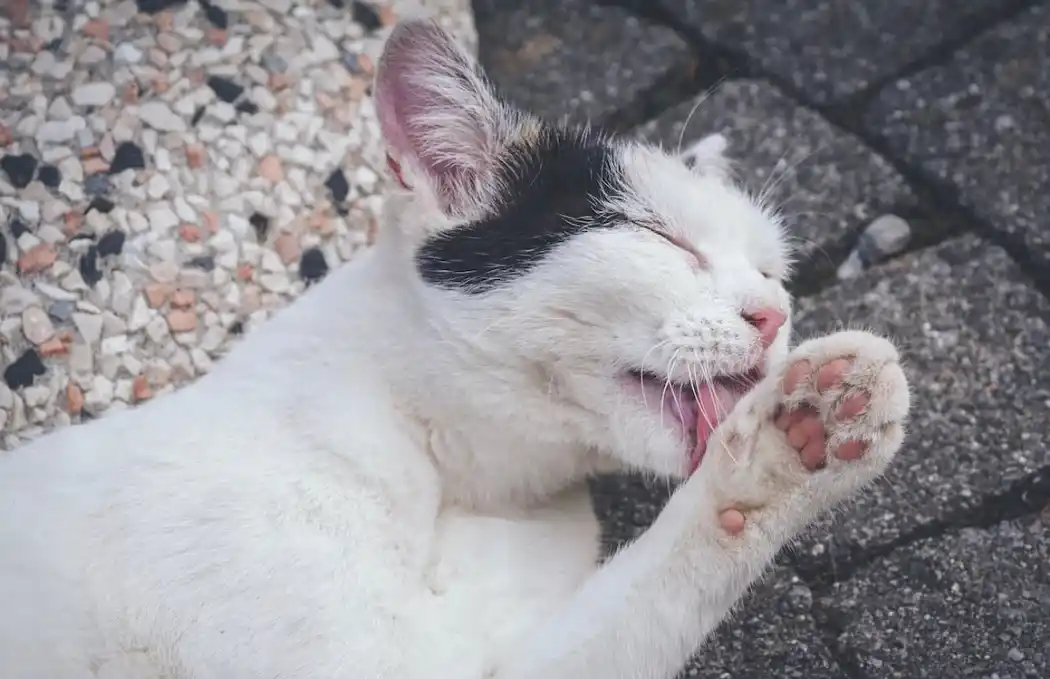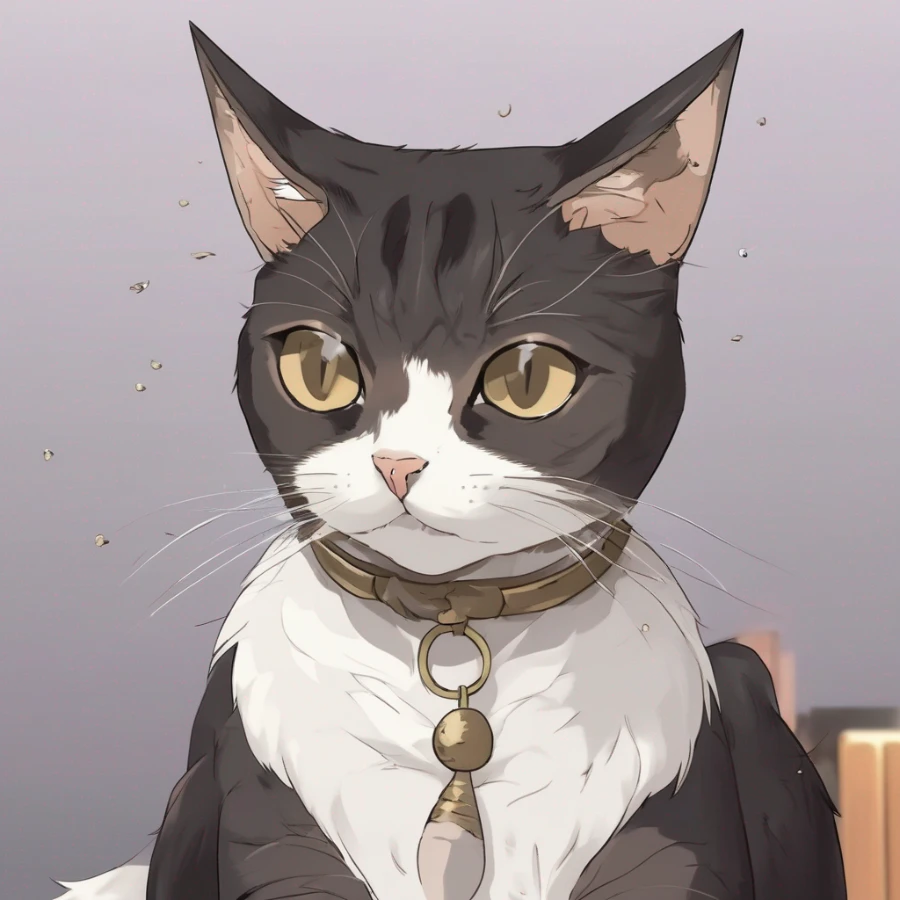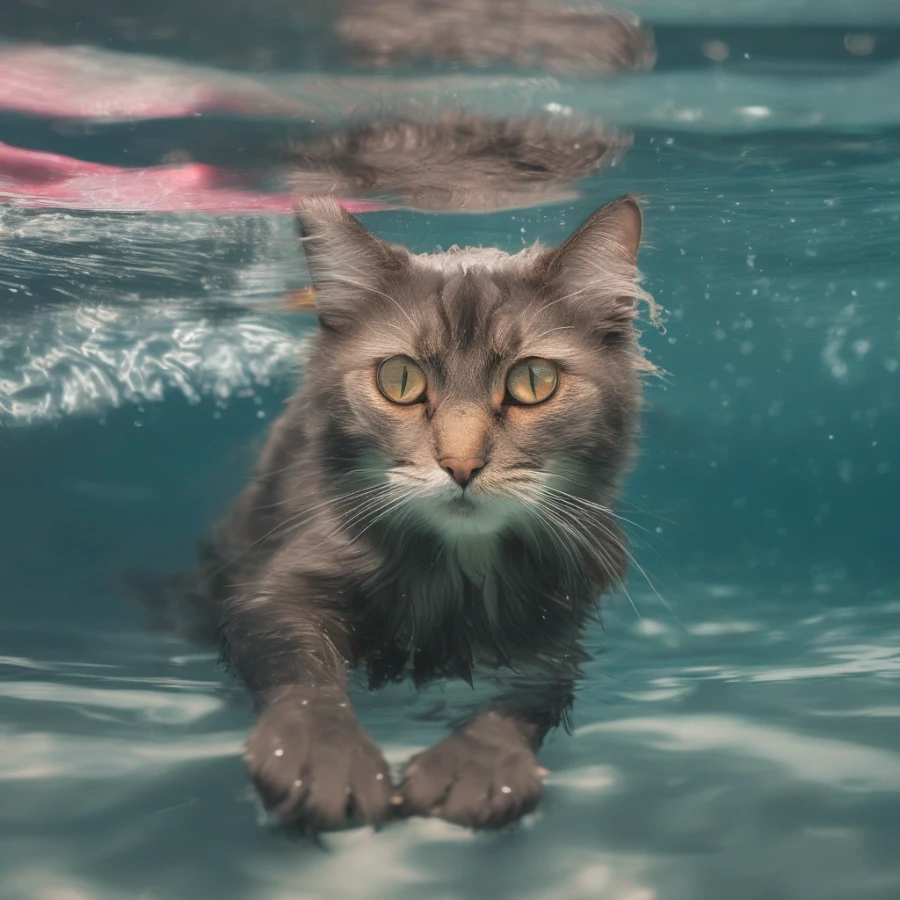Why Does My Cat Lick Me Then Bite Me While Purring?

Published by: Tatsiana Korshik
Time to Read: 3 Min

Licking followed by biting can be a common behavior in cats, and it's often a mixed signal that can have a few different reasons behind it. Here are a few possible explanations for why your cat might be licking you and then biting while purring:
Affection and Social Bonding:
Cats engage in grooming behaviors as a way to establish and reinforce social bonds. When your cat licks you, it's mimicking the grooming behavior it would use with other cats in its social group. This is a sign of affection and a way for your cat to show that it considers you a part of its "family." The purring that accompanies the licking is another sign of contentment and happiness.
Playful Interaction:
Licking followed by gentle biting can also be a form of play for cats. In the wild, young cats play-fight with each other, and this behavior can continue into adulthood. Your cat might perceive your hand or fingers as a playmate and engage in this sequence as a form of interactive play. It's important to note that cats have different thresholds for playfulness, and what seems gentle to a cat might be uncomfortable to a human.
Mixed Signals and Overstimulation:
Cats can sometimes give mixed signals when it comes to their behavior. The licking might start as a gesture of affection, but if the interaction becomes too intense or prolonged, your cat might become overstimulated. The biting that follows could be a way for the cat to communicate that it needs a break. This behavior might be more likely if your cat's tail starts to twitch or its ears flatten back.
Instinctual Behaviors:
Cats retain some of their wild instincts even as domesticated animals. The licking and biting sequence could be reminiscent of a wild cat's grooming and play behaviors. Cats also engage in "kill bites" during hunting, which might translate to gentle biting during affectionate interactions. While these behaviors might seem confusing to us, they are part of your cat's natural instincts.
Communication and Trust:
Cats use a variety of behaviors to communicate. The licking and biting sequence might be your cat's unique way of expressing emotions or needs. It could be a display of trust, as cats often expose their vulnerable underbellies during grooming. The biting might be a way to test boundaries and see how you respond.
Remember that each cat is an individual with its own personality and quirks. Pay attention to your cat's body language, vocalizations, and overall behavior to better understand its intentions. If you're concerned about the behavior or if it becomes aggressive, seeking guidance from a veterinarian or a professional animal behaviorist can help you address any issues and foster a positive relationship with your feline friend. Is It Normal For Cats to Lick You? Yes, it's completely normal for cats to lick their owners. Cats use licking as a way to show affection, groom, and establish social bonds. When a cat licks you, it's demonstrating trust, marking you with its scent, and expressing its attachment. This behavior is a sign of your cat's affectionate and positive feelings toward you, and it's a common way that cats communicate and interact with their human companions.
Grooming Behavior: Cats are renowned for their meticulous grooming habits. When your cat licks you, it's a sign of affection and trust, akin to how they groom fellow felines. This demonstrates their regard for you as a valued member of their social circle.
Scent Marking: Cats possess scent glands in their mouths. By licking you, they transfer their unique scent, effectively marking you as part of their territory. This action signifies your inclusion in their close-knit social unit.
Comfort and Bonding: Licking offers cats comfort and a sense of security. Your cat may engage in this behavior during tranquil moments, such as when you're relaxing together, as a way to bond with you.
Communication: Cats communicate through a combination of body language, vocalizations, and touch. Licking is one way your cat expresses their feelings. It can signify a simple "hello" or a gentle affirmation of their presence.
Attention-Seeking: If your cat licks you and receives your attention or petting in response, they may learn that licking is an effective way to garner your affection. It becomes a means for them to interact and connect with you.
Display of Trust: Exposing their belly, a vulnerable area, signifies a deep level of trust in a cat. When your cat licks you, they may also expose their belly as a gesture of confidence and ease in your company.
Social Bonding: Licking is an inherently social behavior in cats. Your cat's licking acts as a bonding ritual, strengthening the connection and camaraderie between you.
Remember, while licking is generally a positive behavior, excessive licking or changes in behavior should be monitored. If you notice any concerning developments, it's wise to consult a veterinarian, as these changes could indicate underlying health or emotional issues.
Provide Alternatives: Offer your cat appropriate objects to lick, such as cat-safe grooming brushes or lickable cat treats. This can redirect their licking behavior onto more suitable items.
Distract with Play: Engage your cat in interactive play sessions using toys that stimulate their hunting instincts. This can help divert their attention from licking to more active and mentally stimulating activities.
Positive Reinforcement: When your cat isn't licking you, provide positive attention and treats. This can reinforce the behavior you want to encourage while also helping your cat associate other behaviors with rewards.
Grooming: Regularly groom your cat to keep their coat clean and well-maintained. This might reduce the need for excessive self-grooming, including licking you.
Behavior Modification: Consider consulting a professional animal behaviorist if the licking behavior persists or becomes problematic. They can provide personalized guidance and strategies to address the behavior effectively.
Set Boundaries: If your cat licks you too aggressively or it becomes uncomfortable, gently remove your hand and redirect their attention. Over time, your cat might learn that licking too much leads to the interaction ending.
Use Taste Deterrents: Some taste deterrents designed for pets can be applied to your skin to discourage licking. However, make sure these products are safe for cats and consult your veterinarian before using them.
Remember that cats have individual personalities, and some cats are more prone to licking than others. While it's natural for cats to groom and show affection through licking, excessive or compulsive licking could indicate an underlying issue that needs attention. Always approach behavior modification with patience, consistency, and a focus on your cat's well-being.
Affection and Social Bonding:
Cats engage in grooming behaviors as a way to establish and reinforce social bonds. When your cat licks you, it's mimicking the grooming behavior it would use with other cats in its social group. This is a sign of affection and a way for your cat to show that it considers you a part of its "family." The purring that accompanies the licking is another sign of contentment and happiness.
Playful Interaction:
Licking followed by gentle biting can also be a form of play for cats. In the wild, young cats play-fight with each other, and this behavior can continue into adulthood. Your cat might perceive your hand or fingers as a playmate and engage in this sequence as a form of interactive play. It's important to note that cats have different thresholds for playfulness, and what seems gentle to a cat might be uncomfortable to a human.
Mixed Signals and Overstimulation:
Cats can sometimes give mixed signals when it comes to their behavior. The licking might start as a gesture of affection, but if the interaction becomes too intense or prolonged, your cat might become overstimulated. The biting that follows could be a way for the cat to communicate that it needs a break. This behavior might be more likely if your cat's tail starts to twitch or its ears flatten back.
Instinctual Behaviors:
Cats retain some of their wild instincts even as domesticated animals. The licking and biting sequence could be reminiscent of a wild cat's grooming and play behaviors. Cats also engage in "kill bites" during hunting, which might translate to gentle biting during affectionate interactions. While these behaviors might seem confusing to us, they are part of your cat's natural instincts.
Communication and Trust:
Cats use a variety of behaviors to communicate. The licking and biting sequence might be your cat's unique way of expressing emotions or needs. It could be a display of trust, as cats often expose their vulnerable underbellies during grooming. The biting might be a way to test boundaries and see how you respond.
Remember that each cat is an individual with its own personality and quirks. Pay attention to your cat's body language, vocalizations, and overall behavior to better understand its intentions. If you're concerned about the behavior or if it becomes aggressive, seeking guidance from a veterinarian or a professional animal behaviorist can help you address any issues and foster a positive relationship with your feline friend. Is It Normal For Cats to Lick You? Yes, it's completely normal for cats to lick their owners. Cats use licking as a way to show affection, groom, and establish social bonds. When a cat licks you, it's demonstrating trust, marking you with its scent, and expressing its attachment. This behavior is a sign of your cat's affectionate and positive feelings toward you, and it's a common way that cats communicate and interact with their human companions.
Why Do Cats Lick You?
Cats engage in licking behavior for various reasons, each serving different purposes based on context and individual preferences. Understanding why your feline companion licks you can provide insight into their emotions and communication. Here are common motivations behind a cat's licking behavior:Grooming Behavior: Cats are renowned for their meticulous grooming habits. When your cat licks you, it's a sign of affection and trust, akin to how they groom fellow felines. This demonstrates their regard for you as a valued member of their social circle.
Scent Marking: Cats possess scent glands in their mouths. By licking you, they transfer their unique scent, effectively marking you as part of their territory. This action signifies your inclusion in their close-knit social unit.
Comfort and Bonding: Licking offers cats comfort and a sense of security. Your cat may engage in this behavior during tranquil moments, such as when you're relaxing together, as a way to bond with you.
Communication: Cats communicate through a combination of body language, vocalizations, and touch. Licking is one way your cat expresses their feelings. It can signify a simple "hello" or a gentle affirmation of their presence.
Attention-Seeking: If your cat licks you and receives your attention or petting in response, they may learn that licking is an effective way to garner your affection. It becomes a means for them to interact and connect with you.
Display of Trust: Exposing their belly, a vulnerable area, signifies a deep level of trust in a cat. When your cat licks you, they may also expose their belly as a gesture of confidence and ease in your company.
Social Bonding: Licking is an inherently social behavior in cats. Your cat's licking acts as a bonding ritual, strengthening the connection and camaraderie between you.
Remember, while licking is generally a positive behavior, excessive licking or changes in behavior should be monitored. If you notice any concerning developments, it's wise to consult a veterinarian, as these changes could indicate underlying health or emotional issues.
How Do I Get My Cat to Stop Licking Me?
If you're looking to reduce your cat's licking behavior, here are some strategies you can try:Provide Alternatives: Offer your cat appropriate objects to lick, such as cat-safe grooming brushes or lickable cat treats. This can redirect their licking behavior onto more suitable items.
Distract with Play: Engage your cat in interactive play sessions using toys that stimulate their hunting instincts. This can help divert their attention from licking to more active and mentally stimulating activities.
Positive Reinforcement: When your cat isn't licking you, provide positive attention and treats. This can reinforce the behavior you want to encourage while also helping your cat associate other behaviors with rewards.
Grooming: Regularly groom your cat to keep their coat clean and well-maintained. This might reduce the need for excessive self-grooming, including licking you.
Behavior Modification: Consider consulting a professional animal behaviorist if the licking behavior persists or becomes problematic. They can provide personalized guidance and strategies to address the behavior effectively.
Set Boundaries: If your cat licks you too aggressively or it becomes uncomfortable, gently remove your hand and redirect their attention. Over time, your cat might learn that licking too much leads to the interaction ending.
Use Taste Deterrents: Some taste deterrents designed for pets can be applied to your skin to discourage licking. However, make sure these products are safe for cats and consult your veterinarian before using them.
Remember that cats have individual personalities, and some cats are more prone to licking than others. While it's natural for cats to groom and show affection through licking, excessive or compulsive licking could indicate an underlying issue that needs attention. Always approach behavior modification with patience, consistency, and a focus on your cat's well-being.



